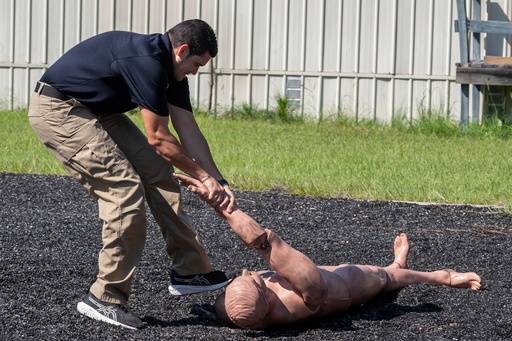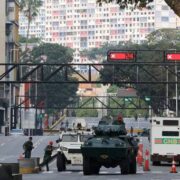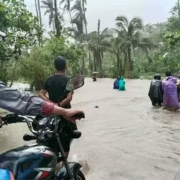ICE recruits train to take on deportation goals

BRUNSWICK, GEORGIA—At an obstacle course in the humid Georgia heat, an instructor shows recruits how to pull a wounded partner out of danger.
In a classroom with desks cluttered with thick legal books about immigration law, recruits learn about how the Fourth Amendment governs their work.
And on a firing range littered with shell casings, new recruits for Immigration and Customs Enforcement (ICE) practice shooting their handguns.
“Instructors, give me a thumbs up when students are ready to go,” a voice over the loudspeaker said before a group of about 20 ICE recruits practiced drawing and firing their weapons.
The Federal Law Enforcement Training Center in Brunswick, Georgia, is the epicenter of training for almost all federal law enforcement officers, including the ICE officers who are at the center of President Donald Trump’s mass deportation efforts.
Funding
Now, with lots of money approved by Congress this summer starting to flow into ICE, the agency is in the midst of a huge hiring effort as it aims to get thousands of new deportation officers into the field in the coming months.
On Thursday, The Associated Press (AP) and other news organizations got a rare look at the Basic Immigration Law Enforcement Training Program that new ICE recruits—specifically those in the Enforcement and Removal Operations unit responsible for finding, arresting and removing people from the country—go through and what they learn.
ICE is getting $76.5 billion in new money from Congress to help it meet Trump’s mass deportation goal. That’s nearly 10 times the agency’s current annual budget. Nearly $30 billion of that money is for new staff.
They’re hiring across the agency, including investigators and lawyers, but the numbers they’re hiring in those areas pale in comparison to how many deportation officers are coming on board. Todd Lyons, the acting director of ICE, was at the training demonstration Thursday. He said the agency currently has about 6,500 deportation officers and is aiming to hire 10,000 more by the end of the year.
With that hiring surge has come concerns that vetting or training of new recruits will be shortchanged. The Border Patrol went through a similar hiring surge in the early 2000s when hiring and training standards were changed; arrests for employee misconduct rose.
Lyons pushed back on concerns that ICE might cut corners when it comes to training. although he said they have made changes designed to streamline the process.
“I wasn’t going to water down training,” Lyons said.
Caleb Vitello, the assistant director of ICE in charge of training, says new recruits will go through about eight weeks of training at the Georgia facility. But they also have training before and after they come here.
One key change, Vitello noted: ICE cut out five weeks of Spanish-language training because he said recruits were only getting to the point of being “moderately” competent in Spanish. He said language translation technology can help fill that void in the field.
Bullet casings
During the six-days-a-week training, new recruits live on the grounds of the sprawling facility, which is covered with pine forests and sits near the Atlantic Ocean a little less than an hour’s drive north of the Florida state line. Hundreds have gone through the training here in recent months.
During the course, new recruits train on firearms in a large indoor shooting range that looks as big as a football field. On Thursday, the floor was littered with spent shell casings as roughly 20 new recruits wearing blue shirts and blue pants practiced shooting from a bent-elbow position and transitional shooting—involving transferring their guns from one hand to another.
Dean Wilson, who oversees the firearms training, compared some of the operations that ICE agents face to a haunted house where they don’t know what might be coming at them.

















